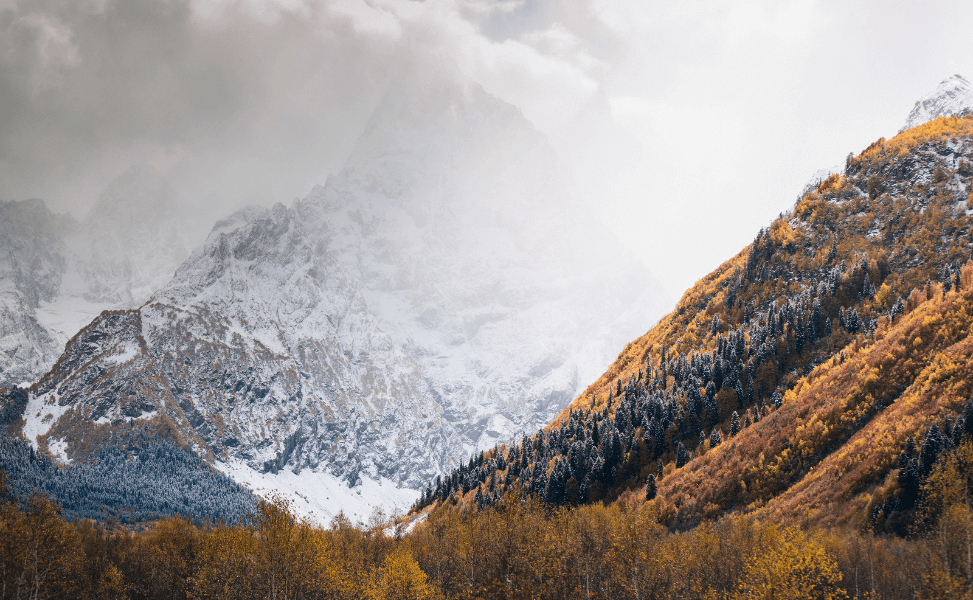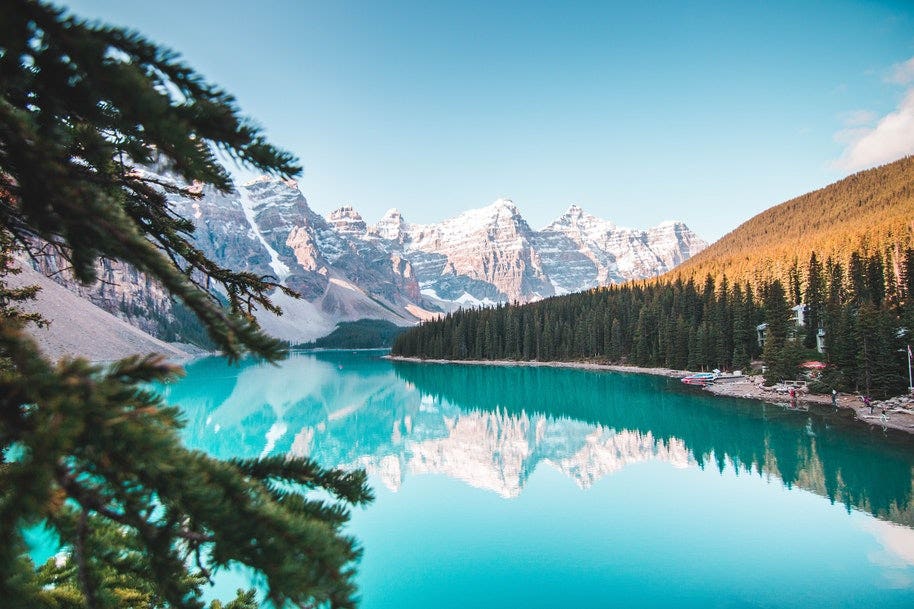
Through landscape photography, you can capture the beauty of scenic landscapes. Understanding the right camera settings is essential to take photographs of breathtaking scenes. In this article, the experts from Camera House will share all the best camera settings to help you capture stunning landscapes.
What is Landscape Photography?
Landscape photography focuses on capturing either man-made or natural landscapes. The unique characteristics of these environments can create interesting and engaging images.
To learn more about landscape photography, check out our article Capturing Perfect Landscape Images on the Camera House blog.

Key camera settings to consider for landscape photography
Great landscape photography, starts with setting up your camera for the environment you’re in. Here are the top settings to consider and what they do. To find the perfect camera to capture landscapes with, check out our article Best Camera for Landscape Photography.
- Aperture: The depth of field controls how much of the landscape will be in focus.
- Shutter Speed: Shutter speed can create interesting effects in your images whether there was movement or if you want to freeze the image.
- ISO: Play around with the ISO level to balance the image quality and reduce noise reduction.
- White Balance: This setting helps balance the colours and temperatures in the scene.
- Focus: Creating a sharp focus in landscape photography is what produces a stunning image.
- Exposure Compensation: Adjust the overall exposure level to ensure the lighting is balanced in the image.
Ideal aperture setting for capturing landscapes
Greater depth of field is made possible by a narrower aperture (higher f-number), such as f/11, f/16, or even higher, which keeps both the foreground and background in focus. It is crucial to comprehend the aperture and depth of field in order to get visually stunning landscape photographs.
To learn more about aperture, check out our articles Understanding Aperture and Understanding Depth of Field on the Camera House blog.
How shutter speed affects landscape photography
Your landscape photos' quality is greatly influenced by the shutter speed you use. You can freeze motion or produce breathtaking long-exposure effects by altering the shutter speed. Fast shutter rates, like 1/500th of a second, stop motion and are perfect for catching fine details in a picture that is moving quickly. Shorter shutter speeds, like a few seconds or even minutes, can capture clouds as stripes across the sky or turn moving water into fluid, mystical streams.
To learn more about shutter speeds, check out our article Shutter Speeds Explained on the Camera House blog.
Recommended ISO settings for optimal image quality in landscapes
The sensitivity of the camera's sensor to light is affected by ISO settings. It's crucial to balance noise reduction and image quality when shooting landscapes. For the best image quality, start with a low ISO level, like ISO 100 or 200, then progressively raise it while shooting in dimly lit environments. Remember that the image may have additional noise or grain at higher ISO settings.
To learn more about ISO settings, check out our article Confused About ISO on the Camera House blog.

Adjust the white balance setting to capture accurate colours
In landscape photography, accurate colour reproduction is crucial since it heightens the mood and ambience of the picture. By adjusting the white balance setting and taking the scene's colour temperature into account, you can capture the landscape's real colours. To reach the desired colour reproduction in your photographs, experiment with various white balance settings, such as daytime, shadow, or foggy conditions.
To learn more about white balance, check out our article How to Use White Balance on the Camera House blog.
Focus settings or techniques for sharp landscape images
It's essential to pay attention to focus settings and approaches to create sharpness in landscape photographs. You should adjust the focal point using manual focus, to enable you to capture sharp details. Play around with the focus and try to see what works for your landscape.
To learn more about focus settings, check out our article Understanding Focus Points on the Camera House blog.
Additional camera settings that can enhance landscape photographs
Beyond the settings we’ve ran through above, there are a few other settings you can experiment with to find your style. With bracketing, you can take a number of pictures at various exposures that can later be merged to produce a dynamic range. Image stabilisation will lessen your camera shake, especially when using a handheld camera in dim light producing a crisp image. Finally, if you shoot in a RAW format you’ll have more post-processing options in the editing process.
Learn more photography techniques and tips at Camera House
Take advantage of Camera House’s knowledgeable staff in-store and online and ask them which camera settings for landscape images are right for you! Check out our shipping information online and enjoy flat-rate delivery Australia-wide, or check out our store locator to visit a Camera House store near you.
